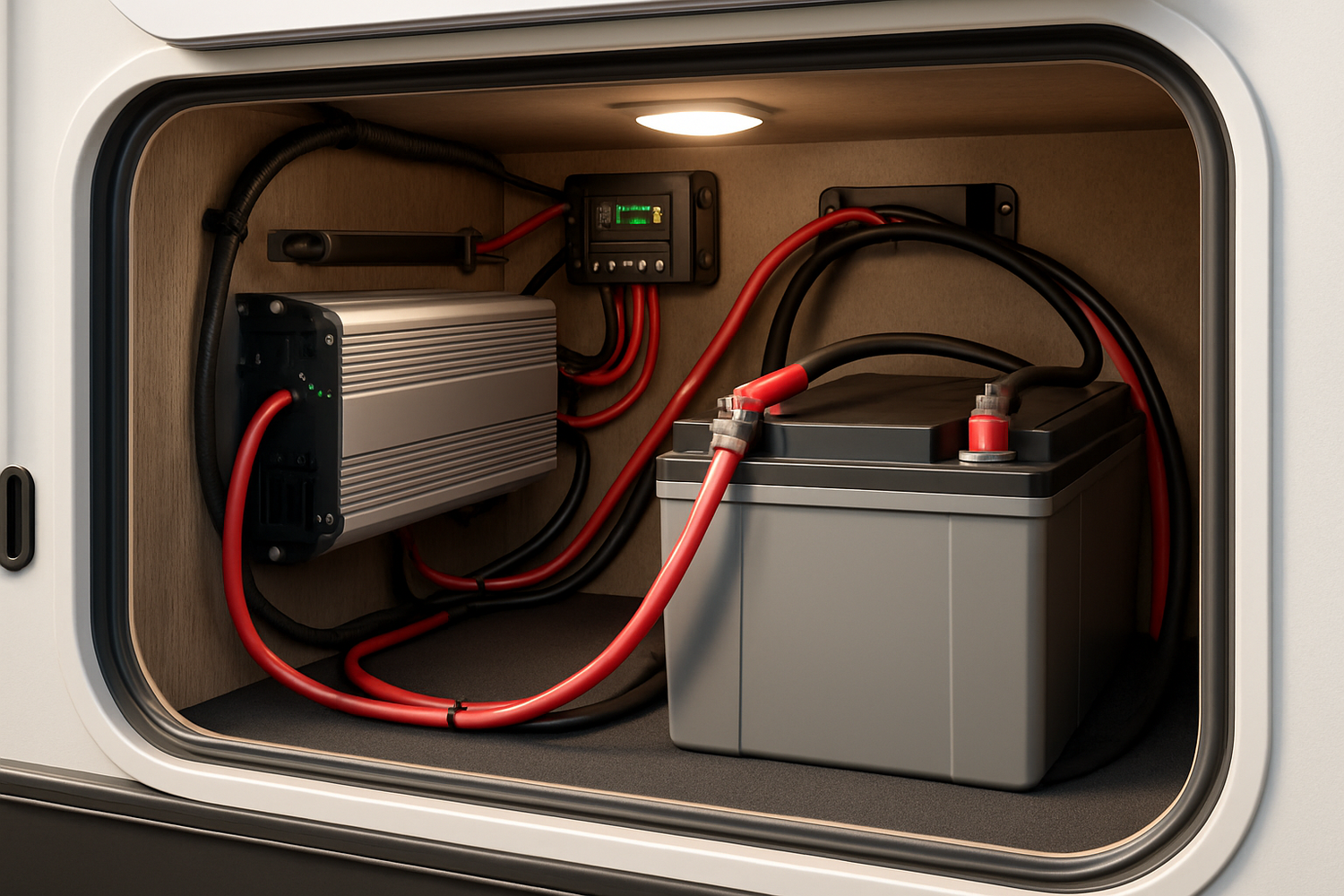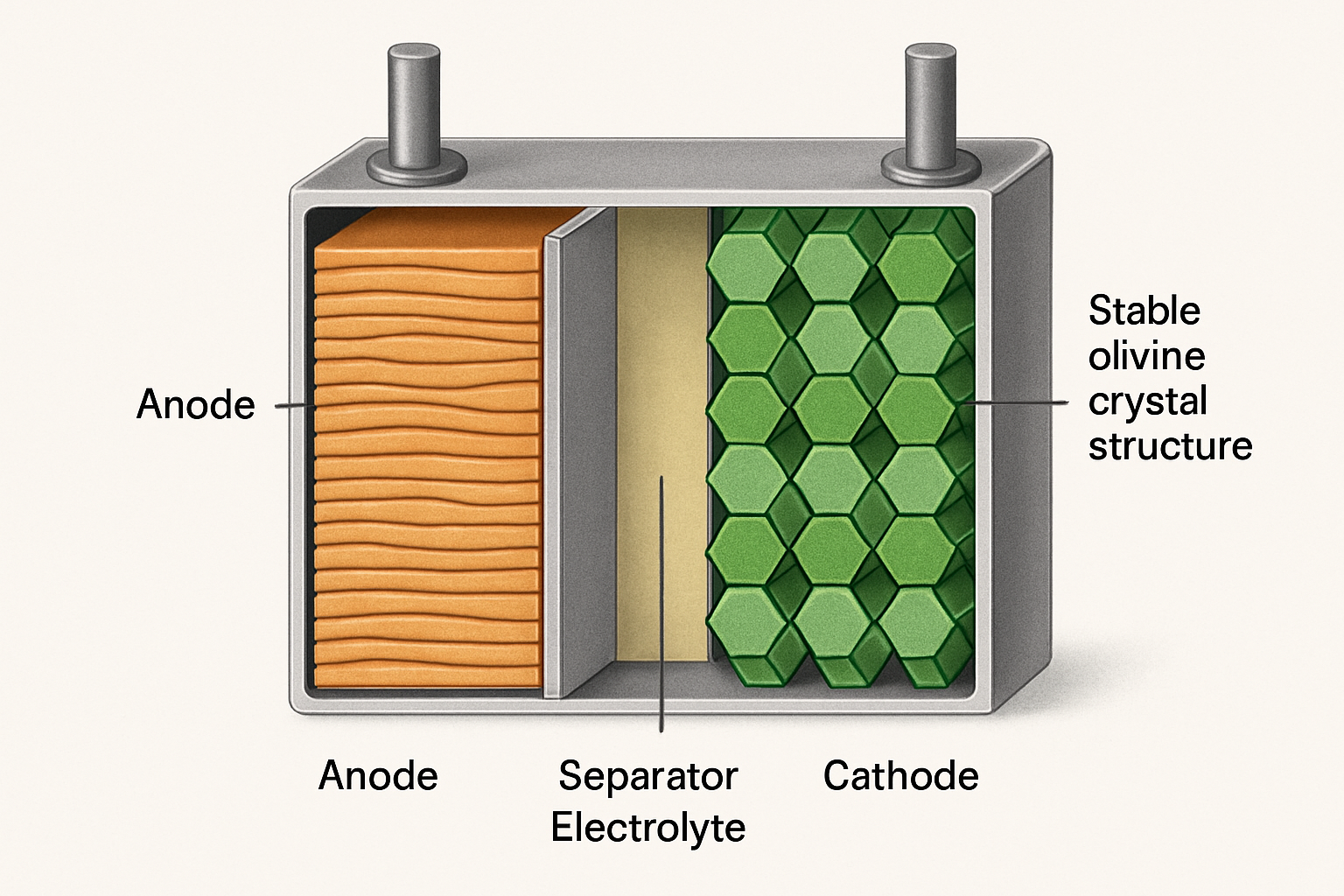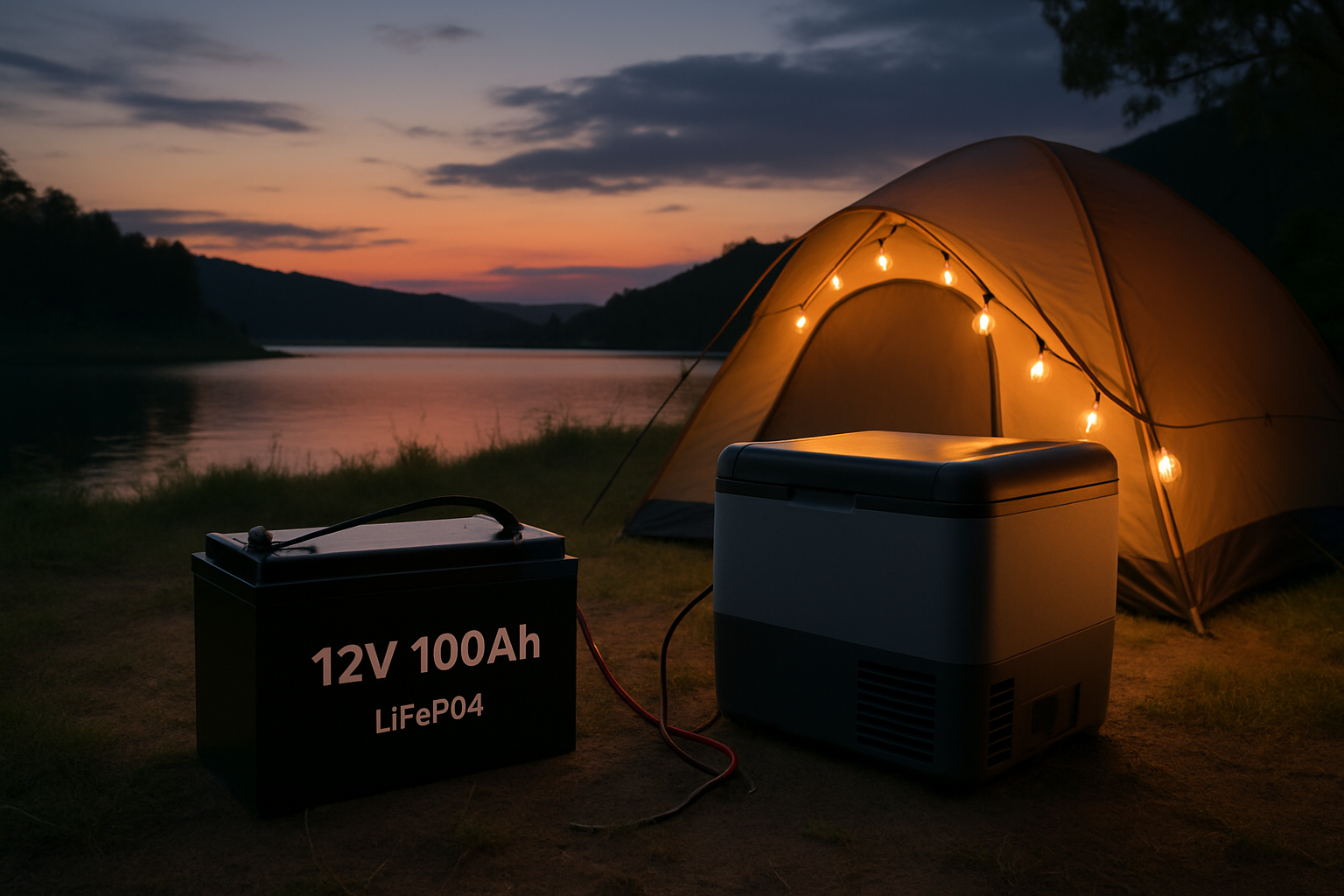The true freedom of RV life hinges on one critical component: reliable power. For years, RV owners were tethered to noisy generators or limited by the heavy, inefficient performance of traditional lead-acid batteries. Today, a significant shift in RV energy storage is empowering travelers to venture further and stay off-grid longer. The adoption of 12V lithium batteries, specifically those using Lithium Iron Phosphate (LiFePO4) chemistry, has become the new benchmark for performance and dependability.
Upgrading your RV's power system is a foundational step toward achieving genuine energy independence. This guide provides a thorough overview of why LiFePO4 batteries are the superior choice, how to select the right size for your needs, and what to consider for a seamless system integration.
Why Lithium (LiFePO4) is the Superior Choice for RVs
The move from lead-acid to LiFePO4 isn't just an incremental improvement; it's a complete transformation of your RV's electrical capabilities. These batteries deliver more usable power, last significantly longer, and are inherently safer, making them an ideal power source for modern travel.
Beyond Lead-Acid: A Leap in Performance and Longevity
When you compare LiFePO4 technology to conventional deep-cycle batteries like Flooded Lead-Acid (FLA) or Absorbent Glass Mat (AGM), the advantages become clear. LiFePO4 batteries offer a much longer cycle life, can be discharged more deeply without damage, and are significantly lighter. A 100Ah lithium battery can effectively replace a 200Ah lead-acid bank because its entire capacity is usable, whereas lead-acid batteries should only be discharged to 50% to avoid permanent damage.
This superior performance is a key reason why the energy sector's demand for lithium-ion batteries now accounts for over 90% of the annual market, a massive increase from 50% in 2016. For a detailed comparison, see LiFePO4 vs AGM: Which Deep Cycle Battery is Best for RVs?
| Feature | LiFePO4 (Lithium Iron Phosphate) | AGM (Absorbent Glass Mat) |
|---|---|---|
| Cycle Life | 3,000 - 8,000+ cycles | 300 - 700 cycles |
| Usable Capacity (Depth of Discharge) | 90-100% | 50-60% |
| Weight (for 100Ah) | ~25-30 lbs | ~60-70 lbs |
| Charging Efficiency | ~95-98% | ~80-85% |
| Maintenance | None | None |
The Unmatched Safety Profile of LiFePO4
Safety is a primary consideration in any RV electrical system. LiFePO4 chemistry is the safest and most stable type of lithium-ion battery available. Unlike other lithium chemistries, it is not prone to thermal runaway, making it exceptionally safe for mobile applications. High-quality RV lithium batteries are engineered with an integrated Battery Management System (BMS). This internal computer protects the battery from overcharging, over-discharging, short circuits, and extreme temperatures, ensuring safe and reliable operation. Learn more about why Why LiFePO4 Is the Safest Deep Cycle Lithium Battery Tech.
Long-Term Value and Return on Investment
While the initial cost of a 12V lithium battery is higher than a lead-acid equivalent, its total cost of ownership is significantly lower. Because a LiFePO4 battery can last up to 10 times longer, you avoid the recurring cost and hassle of replacing lead-acid batteries every few years. When you calculate the cost per cycle over the battery's lifespan, lithium technology proves to be a more economical investment for any serious RVer.
Selecting the Right 12V Lithium Battery for Your Rig
Choosing the correct RV lithium battery involves more than just picking the largest one you can find. A properly sized and specified battery bank will meet your power needs without being excessive or insufficient. This ensures your system operates efficiently and reliably for years to come.
Sizing Your Battery Bank: From Power Audit to Amp-Hours
The first step is to conduct an energy audit to understand your daily power consumption. List all the 12V and 120V appliances you use, their power draw (in watts), and the estimated number of hours you use each one per day. This includes everything from lights and water pumps to coffee makers and televisions.
Once you have the total daily watt-hours, divide that number by 12 (for a 12V system) to determine the total daily amp-hours (Ah) you need. It is a good practice to add a 20-25% buffer to account for inefficiencies and unexpected usage. Sizing your battery bank correctly is crucial; get more insights on common pitfalls in our article about Stop Wasting Money: 5 RV Lithium Battery Sizing Mistakes. Depending on your needs, you might consider different capacities, such as those discussed in 5 Best 100Ah Lithium Ion Batteries for Off-Grid RV Life or Is a 200Ah Lithium Battery Overkill for Your RV System?.
Key Technical Specifications to Scrutinize
Beyond amp-hours, several other specifications are vital for performance:
- Continuous Discharge Current: This determines how much power the battery can deliver at once. If you plan to run high-wattage appliances like a microwave or an induction cooktop, you need a battery with a high continuous discharge rating.
- Charge Rate: A higher acceptable charge rate allows your batteries to recharge faster from solar panels or your converter, getting you back to full capacity more quickly.
- Operating Temperature: Check the manufacturer's specified temperature range for both charging and discharging. Some premium LiFePO4 batteries include built-in heating systems to allow for safe charging in freezing conditions. According to the International Energy Agency (IEA), this is an area of ongoing innovation, as typical LFP chemistry performs less well in cold climates.
The Importance of a High-Quality Battery Management System (BMS)
The BMS is the brain of your lithium battery. It is non-negotiable for safety and longevity. A quality BMS actively balances the cells and protects against:
- Over-charge and over-discharge
- Over-current and short-circuiting
- High and low temperatures
Advanced systems may also offer Bluetooth connectivity, allowing you to monitor the battery's state of charge and health directly from your smartphone. This level of control and insight is a hallmark of a reliable, high-performance RV energy storage solution.
Integrating Lithium Batteries into Your RV's Electrical System
Upgrading to RV lithium batteries is often more than a simple drop-in replacement. To unlock their full potential and ensure system-wide compatibility, other components in your RV’s electrical system may need to be updated as well.
System Components: More Than Just a Battery Swap
For a successful lithium upgrade, you must verify the compatibility of these key components:
- Converter/Charger: Your existing converter may not have a charging profile suitable for lithium. A lithium-compatible charger provides the correct voltage (typically 14.4V - 14.6V) to fully and safely charge LiFePO4 batteries.
- Solar Charge Controller: If you have solar panels, your charge controller should have a specific lithium setting. An MPPT (Maximum Power Point Tracking) controller is recommended to maximize energy harvest from your solar array.
- Inverter: To power your AC appliances, a pure sine wave inverter is essential for protecting sensitive electronics. Ensure its capacity matches the loads you intend to run. ANERN's solar inverters are designed for high efficiency and reliability within such systems.
Optimizing how these components work together is key. As noted by the U.S. Department of Energy, efficient DC-to-DC power conversion is critical in solar-plus-storage applications to maximize power output and improve fault tolerance.
Installation Best Practices for Safety and Performance
Proper installation is paramount for safety and longevity. This includes using the correct wire gauge to handle the current, installing appropriate fuses on all positive connections, and ensuring the battery is securely mounted. While LiFePO4 batteries do not require venting, it is still good practice to install them in a location protected from extreme heat and moisture. For a step-by-step overview, review our guide on How to Install a 12V 100Ah Lithium Battery in Your RV.
Disclaimer: This information is for educational purposes only. Electrical work can be dangerous. If you are not comfortable or qualified, please consult a professional electrician.
Debunking Common Myths
Misinformation can create hesitation around upgrading. It's important to separate fact from fiction. One common myth is that lithium batteries are inherently dangerous; in reality, LiFePO4 is an exceptionally stable chemistry. Another is that you can simply drop a lithium battery into any RV without other changes, which ignores the need for compatible charging components. Address these and other misconceptions by reading RV Lithium Battery Myths vs. Reality: What You Must Know.
The Future of RV Energy Storage
The technology behind RV energy storage is continually advancing, promising even greater capabilities for off-grid freedom. As a company focused on providing reliable and scalable energy solutions, we are committed to staying at the forefront of these developments.
Innovations in Battery Technology and Recycling
The battery industry is rapidly evolving, with ongoing research into higher energy densities and alternative chemistries. Equally important is the development of sustainable end-of-life solutions. The International Energy Agency projects a massive surge in spent batteries, highlighting the immense scope for recycling. Effective recycling reduces the demand for new mining and creates a circular economy, ensuring that the clean energy transition is truly sustainable. This aligns with our vision for long-term, responsible energy solutions.
Achieving True Energy Independence on the Road
A well-designed RV power system, built around a high-quality LiFePO4 battery bank, is the key to energy independence. It empowers you to run your appliances, work from the road, and explore remote locations without relying on shore power. By integrating our high-performance lithium batteries with solar panels and an efficient solar inverter, you create a self-sustaining ecosystem. This approach is central to our off-grid solar solutions, designed to provide reliable power wherever your journey takes you. For a complete picture of what's possible, explore The Ultimate Guide to 12V LiFePO4 Batteries for Your RV.
Empowering Your Adventures with the Right Power Foundation
Upgrading to a 12V lithium battery system is an investment in your freedom and comfort on the road. LiFePO4 technology delivers unmatched performance, a superior lifespan, and inherent safety that older battery types simply cannot match. By carefully assessing your power needs and choosing high-quality, compatible components, you build a robust and reliable foundation for all your adventures.
This move away from the limitations of traditional power sources allows you to fully embrace the possibilities of RV travel, confident that your energy storage system is ready for the journey ahead.





Leave a comment
All comments are moderated before being published.
This site is protected by hCaptcha and the hCaptcha Privacy Policy and Terms of Service apply.